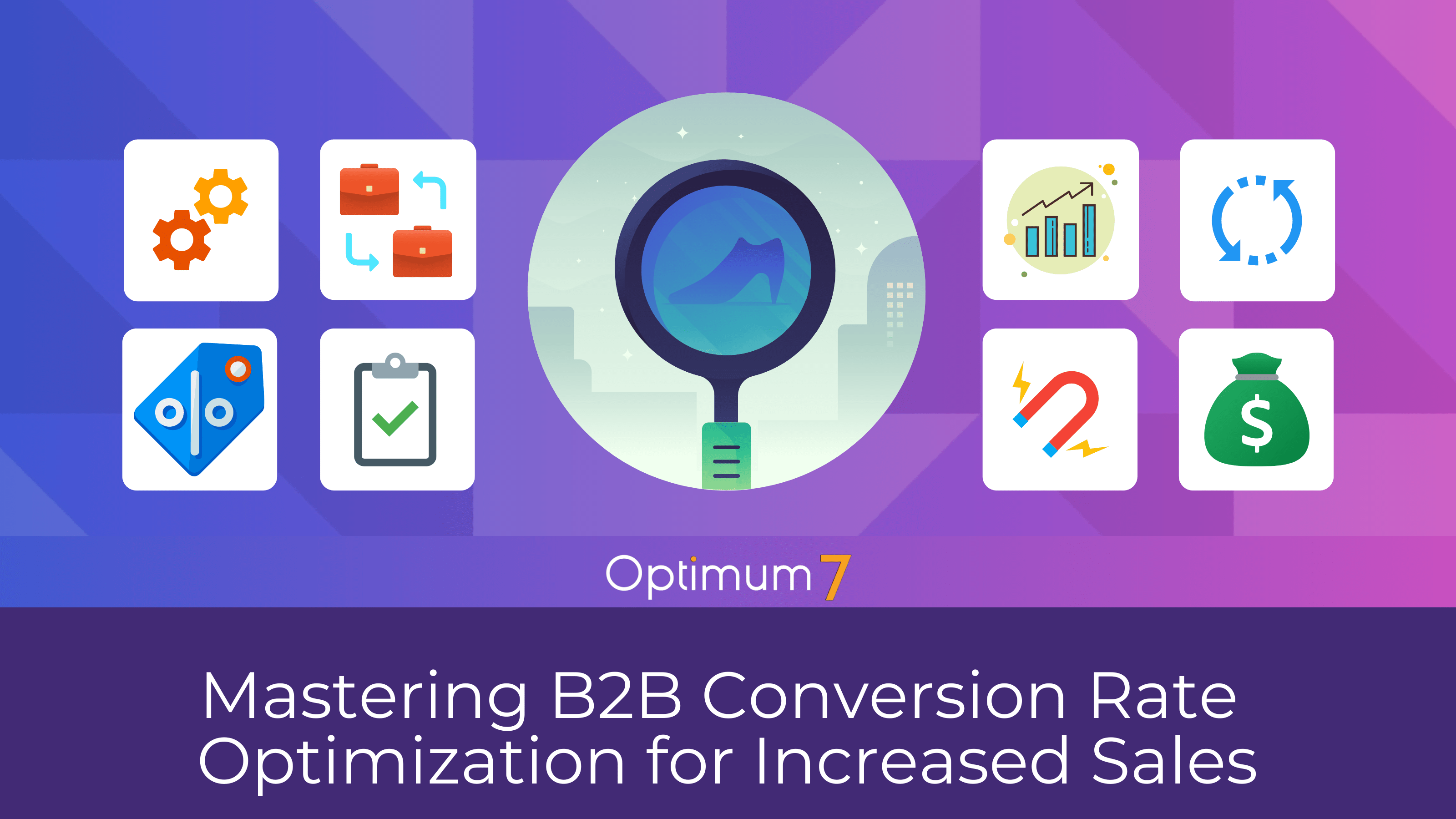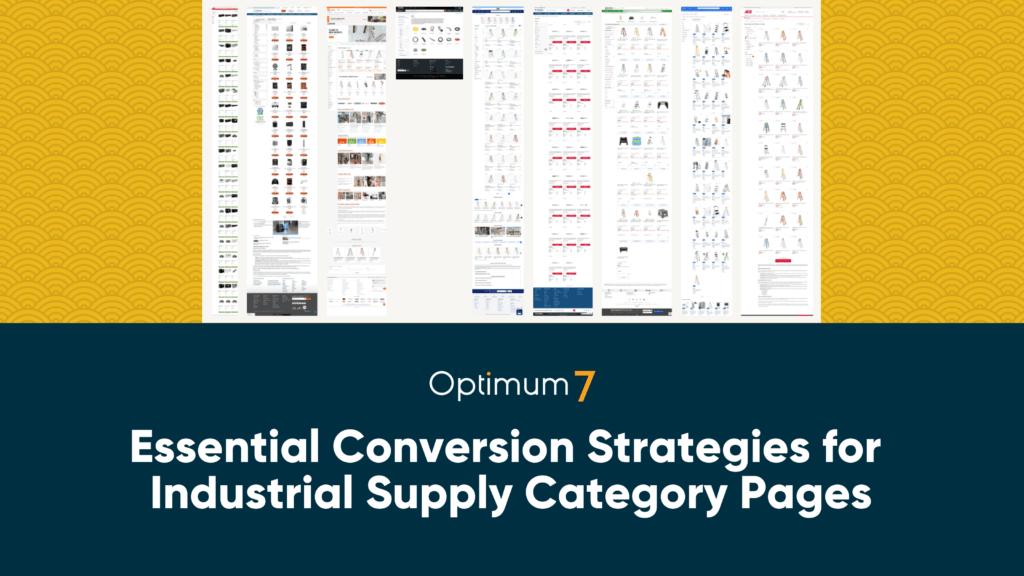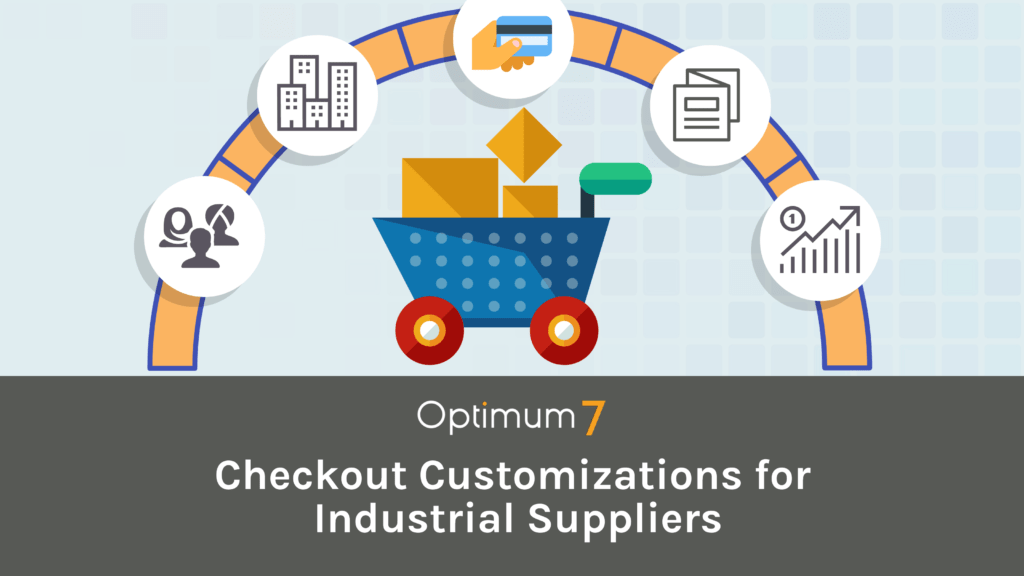Ever felt like your business website is more of a busy intersection than a sales powerhouse? You’re not alone. Many B2B companies find themselves stuck with lots of traffic but not enough sales. It’s frustrating—like knowing there’s gold somewhere but not having the right tools to mine it. You’ve invested in driving people to your site, yet somewhere along the line, they’re just not taking that final step to become customers.
So, what’s going wrong? Often, it boils down to connection and clarity. Today’s B2B buyers are savvy; they won’t click ‘buy’ or ‘subscribe’ just because they landed on your page. They need reasons to trust you, and they need it to be crystal clear that you understand their challenges and have the right solutions. If your website isn’t making this obvious, potential customers might just look elsewhere.
That’s where eCommerce conversion rate optimization comes into play. Improving your conversion rates isn’t just about tweaking a button here or changing a font there. It’s about really understanding who’s coming to your site and what they need from you. It’s about ensuring that every part of your website speaks their language and answers their most pressing questions. Stick around, and we’ll go through some solid strategies that can help transform your website from just being a busy spot on the web to being a true conversion machine.
Understanding Your Audience: A Practical Approach
Moving forward, understanding your audience is the bedrock of enhancing your B2B conversion rates. It’s about more than just knowing who they are—it’s about understanding what drives them and what they’re truly looking for. As a business owner, you have some powerful tools at your disposal to gain these insights.
First off, your Ideal Customer Profile (ICP). Creating an ICP isn’t just a theoretical exercise; it’s a practical blueprint that outlines who your best customers are and why they buy from you. But how do you get this information? Talk to your customers—literally. Reaching out directly to engage in conversations, whether through surveys, interviews, or casual chats, can unearth goldmines of insights. Ask them what challenges they face, what solutions they seek, and what made them choose your product or service over others. This direct feedback is invaluable and often provides more clarity than any amount of data analysis.
Another straightforward approach is to keep an eye on your competitors. What are they doing that attracts their audience? Visit their websites, subscribe to their newsletters, and use their services. Look for patterns in how they communicate and what they emphasize. This doesn’t mean copying them, but rather learning what works in your industry and how you can adapt these strategies to better suit your unique selling points.
Lastly, there’s the digital footprint analysis, like setting up tracking in Google Analytics. This can show you what actions visitors are taking on your site, where you’re losing them in the sales funnel, and what content keeps them engaged. However, keep in mind this method isn’t foolproof. It takes time to collect enough data to see patterns, and the data you get isn’t always the full story. It’s a good tool, but it should be just one part of a broader strategy to understand your audience.
By combining these methods—direct communication, competitor analysis, and digital tracking—you can paint a comprehensive picture of your B2B customers. This understanding is crucial to tailoring your website and your overall sales strategy to better meet their needs and, ultimately, to convert more of them into paying customers.
Optimizing Website Design for B2B Conversions
In the B2B realm, your website isn’t just a platform; it’s a crucial part of your sales force. It needs to not only look professional but also convey that it’s explicitly crafted for business transactions. This helps in building immediate trust with your Ideal Customer Profile (ICP) who are actively seeking a B2B-specific experience. They don’t just want a product; they need a seamless integration into their procurement processes.
User experience (UX) on a B2B site goes beyond aesthetics and navigability—it involves embedding functionalities that address specific business needs. Consider integrating features such as tax exemption options, bulk order capabilities, and purchase approval workflows. These functionalities signal to your customers that you understand and cater to the nuances of their buying process.
For instance, a tax exemption feature simplifies the purchasing step for organizations that are exempt from sales tax, removing a common hurdle in the procurement process. Similarly, enabling bulk orders directly on the product page, with adjustable quantities and pricing, can make it easier for businesses to buy large quantities without the need for back-and-forth communication. Additionally, including a workflow for purchase approvals reflects an understanding of corporate buying dynamics, where multiple stakeholders might need to review and approve a purchase before it can be finalized.
Each of these tailored features not only improves the user experience but also enhances the perceived value of your site and services. By demonstrating that you understand and anticipate the specific needs of business customers, you can foster a deeper sense of trust and reliability, crucial factors in any B2B relationship. This approach not only sets you apart from competitors but also directly influences the conversion efficiency of your site.
Leveraging Advanced Analytics for B2B Conversion Insights
Harnessing the power of analytics can dramatically shift how you view and optimize your B2B website for better conversions. Google Analytics, for instance, isn’t just about counting visitors—it’s about understanding their journey through your site and pinpointing where you might be losing potential sales.
Let’s say you want to delve deeper into how prospects interact with your forms, which are often the final step before they become leads. Instead of a basic contact form, consider implementing a multi-step form with each step hosted on a separate URL. This setup allows you to track how far users progress in filling out the forms. If you notice a significant drop-off at a particular step, it’s a clear indicator that something about that step isn’t working. Maybe the questions are too invasive or complex? With this insight, you can refine the questions or add tooltips and examples to help guide users through the process more smoothly.
While heatmaps are another tool that can offer insights into where users click, move, and scroll on your site, they can also slow down your site performance. In the B2B sector, where the volume of traffic isn’t usually as high as in B2C, the impact of heatmaps might not be as significant. However, they can still provide valuable qualitative data that helps understand user behavior on critical pages.
Setting up specific conversion tracking is crucial. For example, if you have a download button for a white paper or a sign-up form for a webinar, track these as conversion points in Google Analytics. This tracking helps paint a clearer picture of what actions users are completing and which they are avoiding. Such data is invaluable as it allows you to continuously refine and optimize your website’s user experience and conversion paths.
By strategically using analytics tools to reverse engineer and monitor specific actions on your site, you can make informed decisions that directly enhance your website’s effectiveness in converting visitors into leads and customers.
Content Marketing Strategies That Resonate with Your ICP
When it comes to B2B content marketing, getting your message across in a way that resonates with your Ideal Customer Profile (ICP) is crucial. It’s not just about what you say; it’s about speaking in terms that your audience understands and values. This starts with a deep understanding of the messaging that clicks with your potential customers, often illuminated by observing your competitors.
Analyzing competitors’ content can provide insights into the industry norms—what your potential customers expect to hear and what kinds of solutions they are being offered. This understanding helps you not only to meet these expectations but also to pinpoint where you can differentiate yourself. What is your unique selling point (USP)? Once you identify it, your next task is to weave this USP into your content in a way that’s both clear and compelling.
Incorporating elements like graphs and infographics to demonstrate the tangible benefits of your product can significantly enhance the impact of your content. Show, don’t just tell, how your product or service solves problems, improves processes, or cuts costs. Visual aids help cut through the noise, making complex information easier to digest and more engaging.
Remember, the ultimate goal of your content is consumption that leads to conversion. Pack your articles, blogs, and white papers with useful information that not only educates but also entices your readers to learn more. Every piece of content should leave them feeling more informed and confident about your understanding of their needs. By strategically delivering content that resonates, aligns with their expectations, and showcases your unique solutions, you’ll not only capture but also keep their interest, driving them closer to conversion.
Mastering Email Lead Nurturing in B2B Sales Cycles
In B2B marketing, where the sales cycles are typically longer and more complex, email becomes an indispensable tool. It’s not just about sending out emails; it’s about nurturing your leads through every stage of their decision-making process. The first step in this journey is to capture those precious email addresses with an offer they can’t resist.
A proven strategy is to create high-value content, such as an in-depth guide or a comprehensive industry report, that addresses common challenges or questions in your sector. This content should be compelling enough that potential customers are willing to exchange their email addresses for it. Once you have their contact information, the real work of nurturing begins.
Plan out a six-month email campaign that engages these leads regularly. Each email should serve a purpose in the broader narrative of your campaign. Start by educating them about the industry, followed by more detailed emails that delve into specific pain points they may face and how your solutions can help. It’s crucial to vary the content to keep it interesting—mix educational pieces with case studies, customer testimonials, and even invitations to webinars or live events.
Throughout this campaign, focus on providing value in every message. Help your leads see not only the breadth and depth of your expertise but also your commitment to helping them succeed. By continually showcasing how your solutions align with their needs, you gradually build trust and credibility, making it more likely that when they’re ready to make a decision, your company will be at the forefront of their minds. This slow, steady, and strategic approach is key to converting leads into customers in the B2B space.
Leveraging Tools and Automation for Enhanced B2B CRO
In the realm of B2B conversion rate optimization (CRO), leveraging the right tools and technologies can significantly streamline your processes and enhance the effectiveness of your strategies. Here’s how you can make the most of these tools across different aspects of CRO.
Google Analytics and Looker Studio for Custom Reporting:
One of the most powerful combinations for actionable insights is Google Analytics paired with Looker Studio (formerly Google Data Studio). With Google Analytics, you capture a vast amount of data about how users interact with your site. However, sifting through this data to find actionable insights can be daunting. Looker Studio steps in to transform this raw data into custom reports that are tailored to your specific needs. These reports can focus on various aspects of your site’s performance, such as user behavior, conversion paths, and specific CRO elements, helping you make informed decisions quickly.
Competitor Analysis Tools:
For competitor analysis, the most crucial tool is actually quite simple—an internet connection. Regularly browsing competitor websites, subscribing to their newsletters, and following their social media can provide a wealth of information. This kind of manual surveillance allows you to keep tabs on their messaging, promotions, and any new features they introduce.
Heatmap Tools:
When it comes to understanding user behavior on your website, heatmap tools like Hotjar or Lucky Orange offer invaluable insights. These tools allow you to see where visitors click, how far they scroll, and how they navigate through your site. While Hotjar is widely recognized as the industry standard, Lucky Orange can be a robust alternative, offering similar functionalities. These insights can help you identify hotspots of activity and potential areas of improvement on your pages.
Email Automation and Segmentation with Klaviyo:
For email marketing, especially in the context of eCommerce, Klaviyo is a standout tool. Its strength lies in its deep integration capabilities with eCommerce platforms and its advanced segmentation features. These capabilities allow you to send highly targeted emails based on user behavior, purchase history, and other specific criteria. With Klaviyo, automating email sequences and tailoring content to different segments of your audience becomes not just feasible, but also highly effective.
By integrating these tools into your CRO strategy, you can enhance your ability to make data-driven decisions, understand your competitors, and engage with your audience in a more personalized and impactful way. This leads to not only better conversion rates but also a more streamlined and efficient marketing operation.
Optimum7: Your Partners in B2B Ecommerce Conversion Rate Optimization
At Optimum7, we are not just observers in the world of B2B eCommerce; we are seasoned experts with hundreds of hours of data and firsthand experience in optimizing B2B websites for increased conversions. Our team understands the intricacies and unique challenges of B2B eCommerce, and we’ve successfully navigated these waters time and again for our clients.
Our approach combines deep industry knowledge with a data-driven methodology. We’ve honed our skills in not only identifying the bottlenecks that hinder conversion rates but also in implementing proven strategies that drive results. From enhancing site functionality with tailored features that cater specifically to business customers, to deploying sophisticated analytics and marketing automation tools, we ensure that every aspect of your digital presence is optimized for maximum efficiency and effectiveness.
Choosing Optimum7 means partnering with a team that is committed to your success. We believe in building relationships that grow stronger with every conversion milestone achieved. Let us help you transform your B2B platform into a conversion powerhouse, where every visitor is viewed as a potential long-term customer. Together, we’ll not only meet your sales goals—we’ll exceed them, setting new benchmarks in B2B eCommerce excellence.






